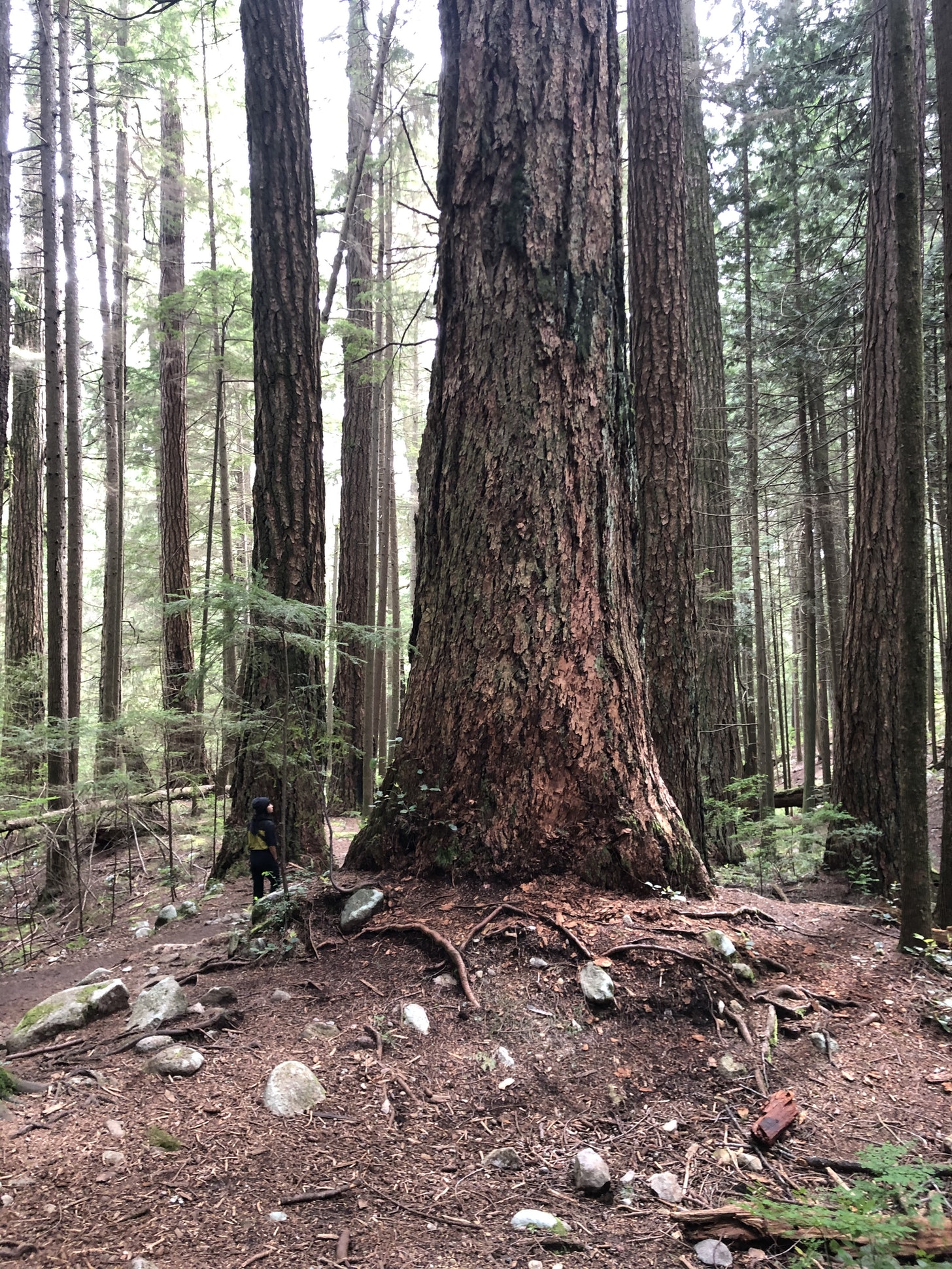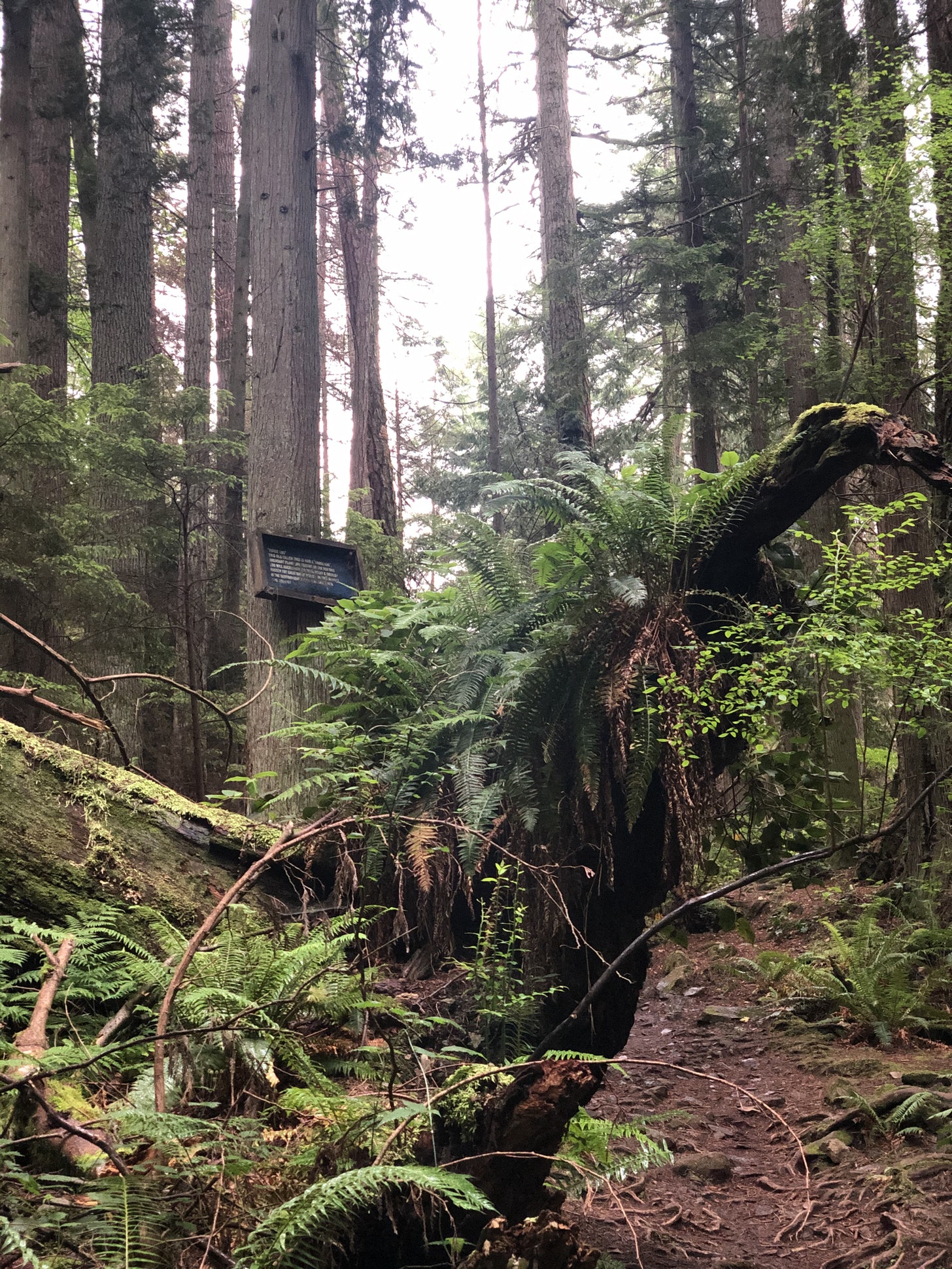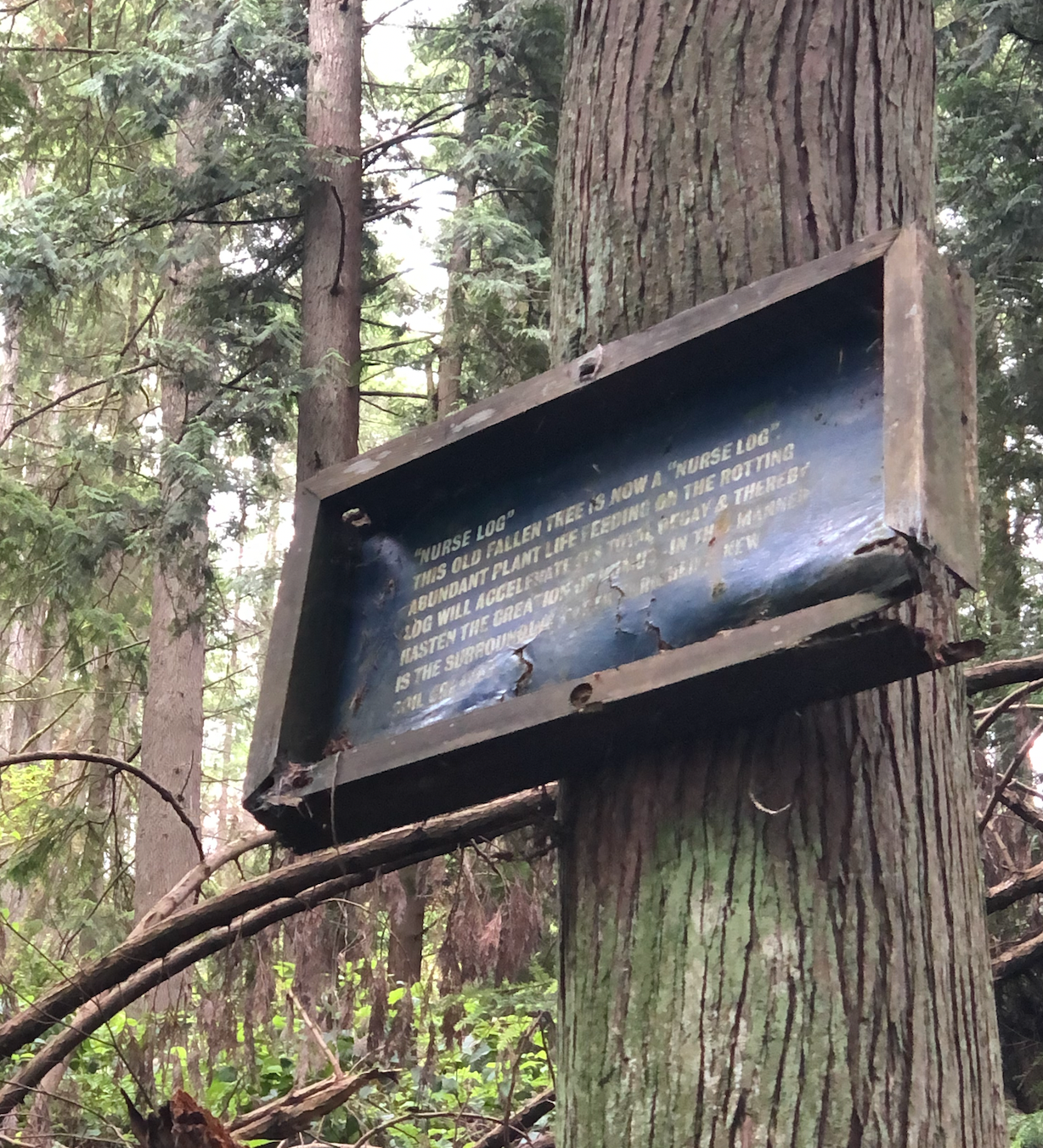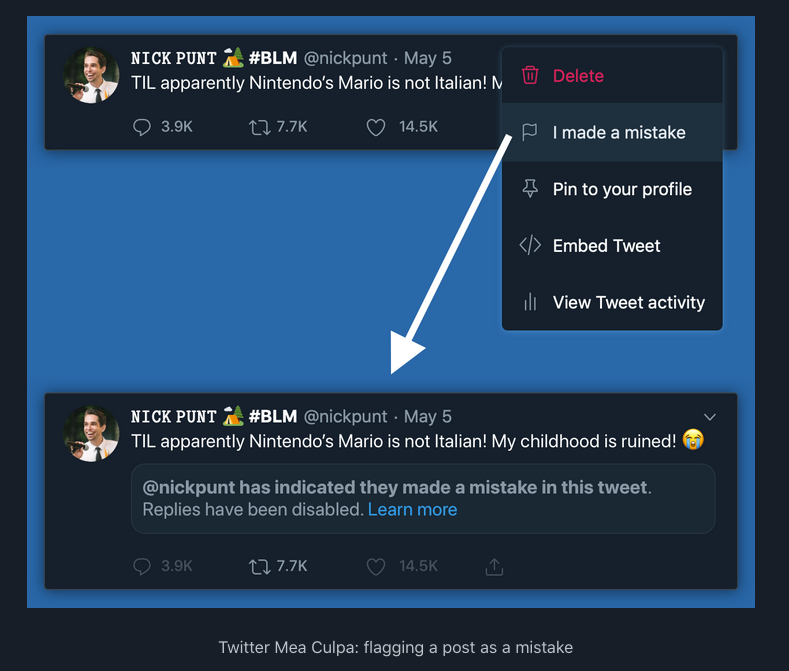Last week I took an internet vacation. I didn’t go anywhere. I just wasn’t online.
I spent a lot of it in the woods. I recently moved to the Pacific Northwest and have fallen in love with the trees. They’re incredible creatures.

You see a lot of these fallen giants covered in new growth.

This particular one had a sign next to it.

It reads:
“Nurse log.” This old fallen tree is now a “nurse log.” Abundant plant life feeding on the rotting log will accelerate its decay and thereby hasten the creation of new plant life in the surrounding area…
While the tree stands, nothing grows beneath it. There’s not enough sunlight. But when the tree falls and becomes a nurse log, the forest floor becomes rich with diverse light, soil, and life.

A towering Douglas fir will live for 500 years, but less than 5% of it is living matter. The rest is the husk and support structure that lifts the tree into the sky. Once it falls and becomes a nurse log, its decaying husk gives life for another 500 years. Where there was one tree, many forms of life grow.
Is that what’s happening now? Is our world becoming a nurse log?
A way of life that’s towered over us — a regime based on short-term individualism — is falling. One of the biggest trees in the human forest is buckling and plummeting to Earth at this very second. We don’t yet know which way things will fall. It’s a scary moment.
Like a tree, the system that’s in power has a lot of support structures. But also like a tree, there’s not much life in it anymore. It’s more husk than living organism.
A way of life is ending. An empire is falling. But things falling isn’t the end. It just marks a new beginning. Even a dead tree can create new life.
Loop Variations
In last week’s post, we explored the spiral as a metaphor for time. In our lives we circle the same challenges and manifest better or worse outcomes each time we do.

We can take this spiral down to a microscopic level, as James Clear does in his book Atomic Habits. Our spirals are comprised of smaller feedback loops.

These feedback loops are extremely powerful. But they aren’t written in stone. As we’ve seen several times in recent weeks, it’s possible to rewire them in unexpected ways.
Eye Mouth Eye 👁👄👁
Last week a series of emoji symbols — 👁👄👁 — started trending on Twitter, obliquely advertising a new must-have app that would blow others out of the water.
Except, it turned out, that wasn’t the real story. Here’s Bento Society member Mario Vasilescu describing what happened next:
In the end, 👁👄👁 raised more than $100,000 for Black Lives Matter-related causes by rewiring a loop. They hooked the internet by playing the right cues, cravings, and responses, then creatively changed the reward to meet the moment.
K-Pop, TikTok, and Trump
Another recent loop rewiring came when the Trump campaign boasted of a million ticket requests for its Tulsa campaign rally. But instead of a triumphant rally, Trump discovered a rewired loop. K-Pop fans and TikTok teens successfully trolled the President by signing up for a loop whose reward they had no intention of fulfilling.
“I made a mistake”
A third instance from the past week comes from a prototype by designer Nick Punt for an “I made a mistake” tweet function. By making it easier for Twitter users to own up to getting something wrong, he theorized, the collective discourse could improve.

In this example it’s not the reward part of the loop that’s being rewritten. It’s the craving. This mock-up uses all the typical behavior science-informed cues, responses, and rewards of product design. However it replaces the assumed user craving for attention with a very different user craving for truth. Inspired.
These loop variations show the power that comes with rewiring expectations. During the Group Bento event where this was first presented, participants worked together to brainstorm loops they could rewrite in their lives and our collective spaces.
Lab notes (recap)
In last week’s Bentoism experiments, we turned the Nurse Log and Loop Variation concepts into two collaborative exercises.
Exercise: "Nurse Log" — Weekly Bento — Sunday July 5, 2020 — 41 attendees
Instructions:
Picture something important in your life that you could imagine falling. What towering aspect of your life could transform into a nurse log?
For example:
-
Could you let your need for approval die and let boldness grow in its place?
-
Could you could let your need to be cool die and let happiness grow instead?
-
Could your pride fall and make space for honest learning?
-
What’s ready to fall? What’s your nurse log?
Participants journaled answers, then discussed in breakout groups.
Exercise: "Loop Variations" — Group Bento — Wednesday July 8, 2020 — 27 attendees
Instructions:
Participants were asked to work together in breakout groups to rewrite three to five behavior loops. Each person chose one of four groups:
- Love and dating
- Family and children
- Social media and the internet
- Work and organizations
Each group had thirty minutes to discuss, then came together to share their ideas. You can watch this here.
Afterwards in the Bento Slack, one participant in the social media and internet group (Mario), shared some reflections:
Hey everyone, I loved today’s session…
The overall themes this brought to mind:
Intentionality. How can we help people build proactive loops instead of reactive loops? How do we adjust the "cue" so that it's more personally/mindfully set up? What if instead of screen time telling you how much time you spent after the fact, you set the aim of how you want to spend your time and work your way toward it.
What if instead of having platforms serve you with a feed and their own algorithmic decisions, the loop involved building your own algorithm? And that was rewarded?
Rewards. What behaviour is being rewarded? Is it volume, ego-based? Or can we make it such that good behaviour is incentivized? E.g. extra recognition and visibility for positing something inspiring, or well-sourced? Or for getting people who are usually the opposite of your political tendencies to appreciate, e.g. diffusing polarization?
Part of the rewards mechanism is what the asset is you get - what does your profile reflect? What if this profile emphasized your consumption and the quality of your contributions? What if it made you look good to be helpful and well-informed?
Values alignment / Control. Adjacent to intentionality. Or, getting a little meta, who is creating the loop for you and why? Who benefits from your attention or participation? From your emotion? Who controls your data? Do you control your digital identity? Changing the loop here so that perhaps you can directly see how you, the end user, benefit and control. See a birds-eye view of your loop. Is the behaviour encouraged actually good for you? How can the loop be adjusted to incorporate elements of your lifestyle you would prefer?*
This experiment provoked interesting insights. Loop variations are an experiment we’ll explore again in the future.
Linknotes
- Sociology of Business author Ana Andjelic and I had a second conversation about brands and meaning this week. In this video we talk Kanye, Madonna, brand galaxies, and bentos. Watch:
- Recent podcast stops: James Altucher, Futures.
Peace and love my friends,
Yancey
The Bento Society

